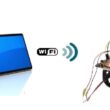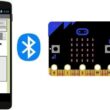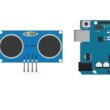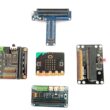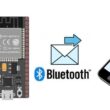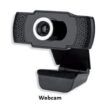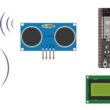The ESP8266 wireless module
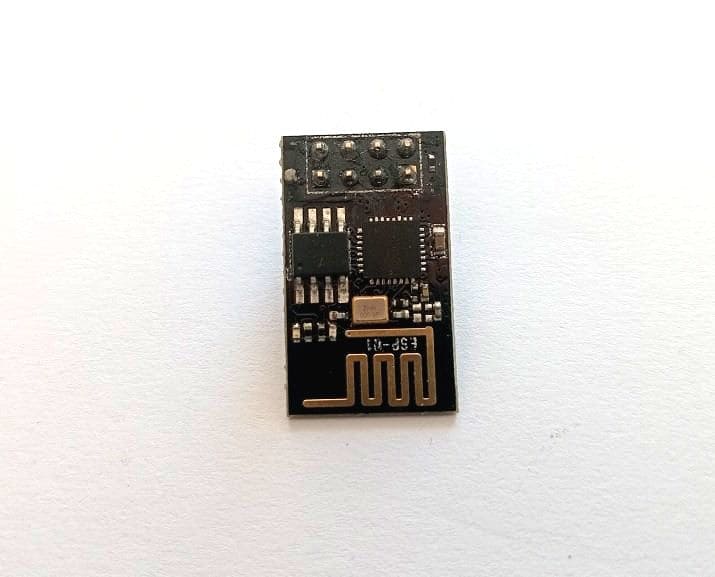
Presentation of the ESP8266 wireless module
The ESP8266 is a low-cost, Wi-Fi enabled wireless module that has gained popularity in recent years for its capabilities and ease of use. Originally designed as a serial-to-Wi-Fi adapter, the module has evolved to become a powerful microcontroller with Wi-Fi connectivity that can be programmed to perform a wide range of tasks.
The ESP8266 module is based on the ESP8266 system-on-chip (SoC) which includes a processor, Wi-Fi radio, and other necessary components. It is available in different configurations, including surface mount packages and breakout boards, making it easy to integrate into a variety of projects.
One of the key features of the ESP8266 module is its ability to function as a standalone microcontroller with Wi-Fi connectivity. This allows it to be used in IoT projects, where it can collect data from sensors or other devices and send that data to a remote server for analysis. The module can also be used for home automation projects, such as controlling lights or appliances remotely.
Programming the ESP8266 is relatively straightforward, and it can be done using a variety of programming languages such as C++, Python, and Lua. It can also be programmed using the Arduino IDE, which makes it easy to integrate with other Arduino-compatible hardware.
In addition to its low cost and flexibility, the ESP8266 module is also notable for its low power consumption, making it ideal for battery-powered projects. Overall, the ESP8266 wireless module is a powerful and versatile component that has enabled many innovative projects in the IoT, home automation, and robotics fields.
ESP8266 module pins
The ESP8266 module has a number of pins, which are used for various functions. Here is a list of the most commonly used pins:
- VCC: This is the power supply pin for the module, which requires a voltage of 3.3V to operate.
- GND: This is the ground pin, which is used as a reference for all other pins.
- RXD: This is the receive pin for serial data. It is used to receive data from an external device.
- TXD: This is the transmit pin for serial data. It is used to send data to an external device.
- GPIO0: This is a general-purpose input/output pin, which can be used for a variety of functions such as digital input, digital output, or as an input for the boot mode.
- GPIO2: This is another general-purpose input/output pin, which can be used for a variety of functions such as digital input, digital output, or as an output for the boot mode.
- CH_PD: This is the chip enable pin, which is used to enable the module.
- RST: This is the reset pin, which is used to reset the module.
- ADC: This is the analog-to-digital converter pin, which can be used to read analog inputs.
- EN: This is the enable pin, which is used to enable the module.
The ESP8266 module and the Internet of Things
The ESP8266 module has played a significant role in the Internet of Things (IoT) revolution. It has become a popular choice for IoT projects due to its low cost, ease of use, and Wi-Fi capabilities.
The module can be used to connect sensors, actuators, and other devices to the internet, allowing them to send and receive data to and from remote servers. This data can be used to monitor and control various aspects of the environment, such as temperature, humidity, lighting, and more.
In addition to its Wi-Fi capabilities, the ESP8266 module also has a small form factor, making it easy to integrate into small devices such as sensors and controllers. It can be programmed using a variety of programming languages, such as C++, Lua, and MicroPython, and can be easily integrated with other hardware platforms such as Arduino.
One of the main advantages of the ESP8266 module for IoT applications is its low power consumption. This makes it ideal for battery-powered projects, where it can run for extended periods of time without needing frequent battery replacements.
Use of the ESP8266 wifi module by the Arduino
The ESP8266 is a popular Wi-Fi module that can be used with the Arduino development environment. It is a low-cost solution for adding Wi-Fi connectivity to Arduino projects, making it an ideal choice for IoT and other wireless projects.
The ESP8266 can be programmed using the Arduino IDE, allowing for easy integration with existing Arduino projects. To use the ESP8266 with the Arduino IDE, the ESP8266 core libraries must be installed first. Once the libraries are installed, the ESP8266 module can be programmed using the familiar Arduino IDE interface.
The ESP8266 module has a number of pins that can be used for various functions, including digital input/output, analog input, and pulse-width modulation (PWM) output. The module also has built-in support for SPI and I2C communication protocols.
One of the main advantages of using the ESP8266 with the Arduino is its low cost and ease of use. The module is easy to integrate with existing Arduino projects, and its low cost makes it accessible to a wide range of users.
Another advantage of using the ESP8266 is its built-in Wi-Fi capabilities, which allow for remote control and data transfer. This makes it ideal for IoT projects that require remote monitoring and control.
The role of ESP8266 module in robotics
The ESP8266 module plays an important role in robotics, particularly in robots that are connected to the internet or using wireless communication.
The ESP8266 module can be used to connect a robot to a Wi-Fi network, allowing it to send and receive data from remote servers. This data can be used to monitor and control various aspects of the robot, such as its movement, sensors, and actuators.
The module can also be used to control a robot remotely, allowing it to be operated from a distance. This is useful for applications where the robot needs to operate in hazardous or hard-to-reach environments.
In addition to its Wi-Fi capabilities, the ESP8266 module can also be used to connect a robot to other wireless networks, such as Bluetooth or LoRa. This allows for greater flexibility in how the robot communicates with other devices.
The module's low power consumption is another advantage for robotics applications, as it allows the robot to operate for extended periods of time on a single battery charge.















